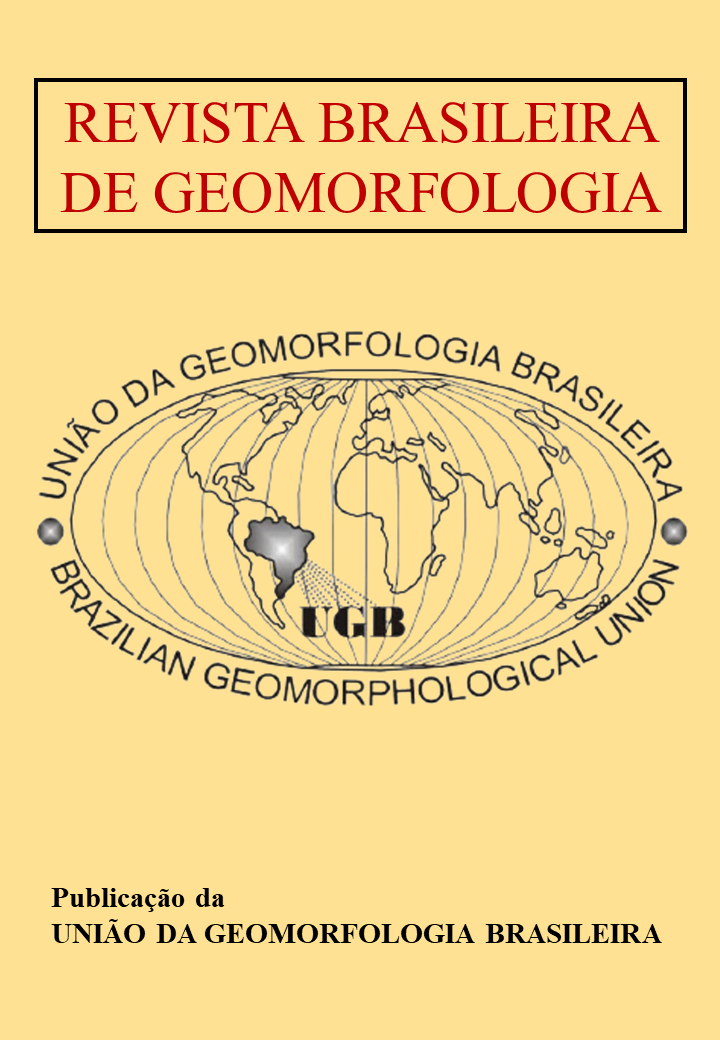Theoretical concepts about alluvial fans and debris cones: case studies of an Alluvial Fan in São Desidério (Bahia, Brazil) and a Debris Cone at Mount Somma, near the Vesuvius Volcano (Naples, Italy)
DOI:
https://doi.org/10.20502/rbgeomorfologia.v25i3.2482Palavras-chave:
Piedmont areas, Alluvial transport, Slope processes, Colluvial depositsResumo
Analyzing the last 24 years of the Brazilian Journal of Geomorphology and the National Symposiums of Geomorphology (SINAGEO), it is evident that there is a lack of studies on alluvial fans in Brazil and in Portuguese literature. The situation is even more unclear concerning debris cones. This paper aims to provide a concise and comprehensive bibliographic review of alluvial fans and debris cones in Portuguese and to the Brazilian geomorphological science. These features are crucial for understanding and studying the relationship between form and process, paleoenvironmental reconstruction, sensitivity to climate variations, risks associated with mass movements on slopes, and more effective territorial planning by human actions. Additionally, the paper seeks to clarify the main theoretical and conceptual distinctions between alluvial fans and debris cones, proposing a new classification based on two particularly illustrative case studies. Do alluvial fans and debris cones represent the same or different depositional forms in the landscape? To this end, the methodology includes a detailed theoretical and conceptual review of the topic, a survey of relevant data about the subject in the main means of the Brazilian geomorphological community dissemination, a proposal of a new classification to differentiate these forms, and the mapping, characterization, comparison and analysis of two specific study areas: an Alluvial Fan identified in São Desidério (Bahia, Brazil) and a Debris Cone identified in Mount Somma, the ancient crater of the current Vesuvius Volcano (Naples, Italy).
Downloads
Downloads
Publicado
Como Citar
Edição
Seção
Licença

Este trabalho está licenciado sob uma licença Creative Commons Attribution-NonCommercial 4.0 International License.
Autor(es) conservam os direitos de autor e concedem à revista o direito de primeira publicação, com o trabalho simultaneamente licenciado sob a Licença Creative Commons Attribution que permite a partilha do trabalho com reconhecimento da autoria e publicação inicial nesta revista.










